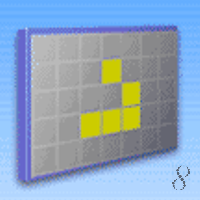

Like any other tool, a design pattern’s usefulness depends on context. Don’t go looking for them with Maslow’s hammer otherwise, you might only find nails. Recognizing design patterns will help you understand how a new framework operates, as well as the thought process involved in its creation.Īs indicated earlier, not all design patterns apply to every game application. Explore new frameworks: When you import a built-in package or something from the Asset Store, inevitably you’ll stumble onto one or more patterns discussed here.Mention the “command pattern” or “object pool” and experienced Unity developers will know what you’re trying to implement. Talk to other developers: Patterns can serve as a shorthand when trying to communicate as a team.They can inform you of how many other developers have approached the same issue – remember, even if you’re not using patterns, someone else is. They are common ways to overcome everyday hurdles in development. Learn object-oriented programming: Design patterns aren’t secrets buried in an esoteric StackOverflow post.You may have already implemented some of these patterns unwittingly.

Game of life starting patterns software#
Software engineers rediscover them all the time in the normal course of development. After all, design patterns are labeled as such because they’re common solutions to well-known problems.

While you can work as a game programmer without studying design patterns, learning them will help you become a better developer. If you’re interested in learning more, check out the SOLID presentation from Unite Austin 2017 by Dan Sagmiller of Productive Edge. Let them organically work themselves into place through necessity. Keep it simple, and don’t try to force the principles into your scripts just for the sake of doing so.
Game of life starting patterns how to#
If you’re unsure about how to use them, refer back to the KISS principle. The principles have dominated software design for nearly two decades at the enterprise level because they’re so well-suited to large applications that scale. You may need to refactor some of your functionality into abstractions or interfaces, but there is often a payoff in long-term savings. In some cases, adhering to SOLID can result in additional work up front. In the e-book, we provide illustrated examples of each principle with clear explanations for using them in Unity. Dependency inversion states that high-level modules should not import anything directly from low-level modules.

Clients should only implement what they need.


 0 kommentar(er)
0 kommentar(er)
